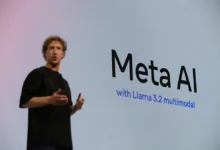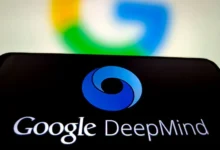
When Mark Zuckerberg announced Meta’s new Superintelligence Labs on June 30, it wasn’t just a rebranding exercise—it was a declaration of war in the global AI talent race. The internal memo, obtained by WIRED, introduced a hand-picked team of nearly two dozen elite researchers from OpenAI, Google DeepMind, Anthropic, GitHub, and Scale AI. Together, they form the core of the new Meta Superintelligence Labs team—Meta’s most ambitious moonshot yet in artificial intelligence.
Zuckerberg’s memo reads like a power move. It’s not just that he’s poached key minds behind GPT-4o, Gemini, and foundational AI architectures—he’s also handed over the reins to two influential figures from the AI infrastructure world: Alexandr Wang, the 27-year-old founder of Scale AI, now Meta’s Chief AI Officer, and Nat Friedman, the former GitHub CEO and long-time AI investor. The duo will co-lead what Zuckerberg is calling Meta Superintelligence Labs (MSL), a sprawling umbrella that includes Meta’s foundational model teams, its long-running FAIR research division, and a new lab dedicated to next-gen models.
The Architects of the Future
The list of hires reads like an all-star team of deep learning:
- Trapit Bansal, who pioneered reinforcement learning on chain-of-thought and helped build the o-series models at OpenAI
- Huiwen Chang, the vision architect behind GPT-4o’s image generation, formerly of Google Research
- Jack Rae, who led the pretraining stack for Gemini and was part of DeepMind’s early large language model efforts
- Shengjia Zhao, a key figure behind ChatGPT and OpenAI’s synthetic data systems
- And Jiahui Yu, formerly a perception lead at OpenAI and co-leader of multimodal systems at Google’s Gemini project
This diverse group of AI scientists gives the Meta Superintelligence Labs team a rare blend of infrastructure mastery, model innovation, and multimodal expertise. These researchers have built the tech that powers today’s most capable generative systems. Now, under Meta’s roof, they’re tasked with going further, toward systems that can reason, adapt, and possibly rival human-level intelligence.
| Lab | Flagship Models | Leadership | Recent Moves |
|---|---|---|---|
| Meta Superintelligence Labs (MSL) | LLaMA 3 (open-source), next-gen AGI in dev | Alexandr Wang, Nat Friedman | Poached top talent from OpenAI, Google, Anthropic. Invested $14.3B in Scale AI. |
| OpenAI | GPT-4o, ChatGPT, Sora | Sam Altman, Mira Murati | Losing talent to Meta. Focused on model alignment and multimodal expansion. |
| Google DeepMind | Gemini 1.5, Gemini Ultra | Demis Hassabis | Shifting toward AGI narrative. Gemini 2.0 expected late 2025. |
| Anthropic | Claude 3 Opus/Sonnet/Haiku | Dario Amodei, Daniela Amodei | Strong safety research. Open-source hints with Claude Function Calling. |
Why It Matters
Meta has spent the last two years playing catch-up in the generative AI boom. While ChatGPT catapulted OpenAI to global fame and Google launched its Gemini line, Meta’s LLaMA models—despite being open-source favorites—lagged in capability and mindshare. That’s changing fast.
Backed by an eye-popping $14.3 billion investment in Scale AI and a fresh team of top-tier researchers, Meta is rebuilding its AI core around the long-term goal of superintelligence. And it’s not subtle: naming the initiative “Superintelligence Labs” is a direct nod to the AGI (Artificial General Intelligence) and ASI (Artificial Superintelligence) discourse that has defined much of the frontier AI narrative.
Reactions: Defensive Rivals and Recalibrated Salaries
The talent raid hasn’t gone unnoticed. Internally, OpenAI executives have described the situation as a “break-in,” according to a leaked memo. The company is now “recalibrating comp,” suggesting that Meta’s deep pockets and more flexible research environment may be triggering a defensive scramble among AI rivals.
Google and Anthropic have yet to issue formal responses, but insiders say several teams are reevaluating retention policies, including equity refreshes and fast-tracking promotions to prevent further brain drain.
Superintelligence or Superhype?
Skeptics argue that branding Meta’s lab as “superintelligence” risks overstating current capabilities. After all, AGI remains a contested and poorly defined concept, with no consensus on benchmarks or timelines. But that may be beside the point. For Zuckerberg, the move signals more than ambition—it’s a strategic pivot to control the narrative of next-gen AI.
By bundling infrastructure (Scale), product (Friedman), and research (the FAIR alumni and new hires) under one unified vision, Meta is creating the kind of vertically integrated AGI lab that rivals OpenAI’s earliest vision—before its nonprofit-to-profit transition caused internal rifts.
What Comes Next
The big question now is execution. Meta has the talent. It has the compute. It has the ambition. But will it ship?
Industry observers will be watching closely for the team’s first public model or product, likely to emerge under the LLaMA or Meta AI branding. Insiders say the lab is focused on breakthroughs in agentic reasoning, memory, and multi-modal synthesis—all critical components for scalable, self-improving systems.
Zuckerberg has made his move. Whether it leads to superintelligence—or just super-inflated expectations—will depend on how the Meta Superintelligence Labs team turns vision into code.
Follow us on WhatsApp, Telegram, Twitter, and Facebook, or subscribe to our weekly newsletter to ensure you don’t miss out on any future updates. Send tips to editorial@techtrendsmedia.co.ke


